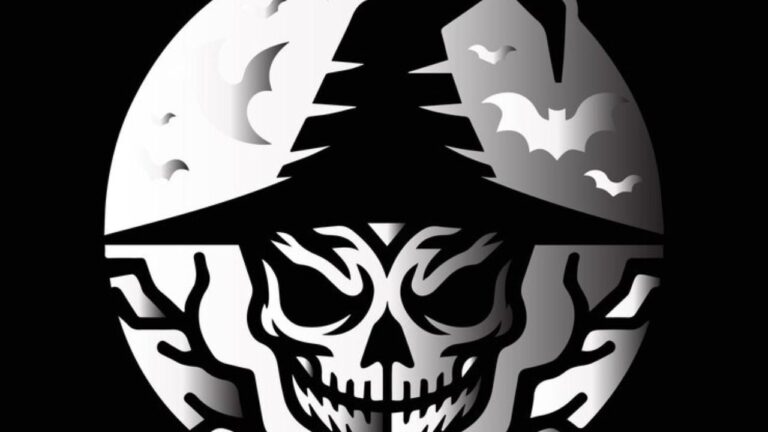The world of cosplay and prop making has seen a surge in popularity, mainly due to the accessibility of high-quality print files. One of the most sought-after items right now is the Stranger Acolyte helmet, a fantasy piece that has captured the imaginations of many. If you’re a cosplayer, a prop maker, or just someone interested in 3D printing, this post is for you. We’ll guide you through everything you need to know about downloading, printing, and finishing your very own Stranger Acolyte helmet.
Why the Stranger Acolyte Helmet is a Must-Have for Cosplayers
Cosplayers are always on the lookout for unique and eye-catching pieces to complete their outfits. The Stranger Acolyte helmet is one such item that stands out due to its intricate design and the aura of mystery it brings. This helmet not only adds an element of authenticity to your costume but also sets you apart from the crowd. Imagine walking into a convention, turning heads, and becoming the center of attention—this helmet can make that happen.
How to Find Free Stranger Acolyte Helmet Print Files
The first step in bringing this awesome piece to life is obtaining the print files. Many websites offer free print files for a variety of cosplay items. Websites like Thingiverse, MyMiniFactory, and The RPF (Replica Prop Forum) are treasure troves for such resources. Always ensure you’re downloading files from reputable sources to avoid poor quality prints or potential legal issues.
Preparing Your 3D Printer for the Task
Before you start printing, it’s essential to prepare your 3D printer. Ensure your printer is calibrated correctly to avoid any mishaps. Check that you have enough filament and that it is compatible with your print files. PLA is often recommended for cosplay props because it is easy to work with and paint. A well-prepared printer can make the difference between a flawless print and a failed one.
Understanding the Print Settings
Getting the print settings right is crucial for achieving a high-quality helmet. Settings like layer height, infill density, and print speed can significantly impact the final product. For detailed prints like the Stranger Acolyte helmet, a layer height of 0.1-0.2mm is ideal. An infill density of 20-30% provides a good balance between strength and material usage. Lastly, adjust the print speed to around 40-60mm/s for the best results.
Printing the Helmet in Sections
Due to the size of the helmet, it’s often necessary to print it in sections. This makes the printing process more manageable and reduces the risks of print failures. Most print files come pre-sliced for this purpose. Carefully follow the slicing instructions provided by the file’s creator. After printing, you can assemble the pieces using super glue or epoxy.
Post-Processing for a Professional Finish
Once your prints are done, the work isn’t over. Post-processing is where the magic happens. Start by sanding the printed parts to remove any layer lines and imperfections. Use progressively finer grits of sandpaper for a smooth finish. After sanding, you can fill any gaps or seams with a filler like Bondo. Once everything is smooth and seamless, apply a primer to prepare the surface for painting.
Painting Your Helmet
Painting is where you can truly bring your helmet to life. Choose colors that match the original design or get creative with your own palette. Use spray paints for an even coat, and consider weathering techniques to give your helmet a more realistic, battle-worn look. Seal the paint job with a clear coat to protect your hard work.
Adding Straps and Padding
For comfort and wearability, add straps and padding to the interior of your helmet. You can use foam padding and adjustable straps to ensure a snug fit. This not only makes the helmet more comfortable to wear but also adds to its overall durability.
Showcasing Your Finished Product
Once your Stranger Acolyte helmet is complete, show it off! Share your creation on social media, cosplay forums, and at conventions. Your work can inspire others and become part of a larger community of enthusiasts. Don’t forget to credit the creator of the print files and share your process to help others achieve the same success.
Troubleshooting Common Issues
Even with the best preparation, issues can arise. Common problems include warping, stringing, and layer shifts. Warping can often be minimized by using a heated bed and proper adhesion techniques. Stringing can be reduced by adjusting retraction settings. Layer shifts usually indicate a mechanical issue with your printer, so check for loose belts or screws.
The Importance of Safety
While 3D printing is a relatively safe hobby, it’s important to follow safety guidelines. Always print in a well-ventilated area to avoid inhaling fumes. Handle sharp tools and chemicals with care during the post-processing stage. Wearing safety gear like gloves and masks can prevent accidents and health issues.
The Future of Cosplay and 3D Printing
The combination of 3D printing and cosplay is only going to grow. With advancements in printer technology and the increasing availability of high-quality print files, the possibilities are endless. Whether you’re a beginner or a seasoned pro, there’s always something new to learn and create. Keep exploring, keep printing, and keep pushing the boundaries of what’s possible.
Final Thoughts
The stranger acolyte helmet print files free rpf is a rewarding experience that combines creativity, technical skills, and a love for cosplay. By following this guide, you’ll not only end up with an amazing prop but also learn valuable skills that you can apply to future projects. Ready to start? Download your print files, fire up your 3D printer, and bring your vision to life.
If you enjoyed this guide and want more tips and tricks for your cosplay projects, make sure to follow our blog and subscribe to our newsletter. Happy printing!
